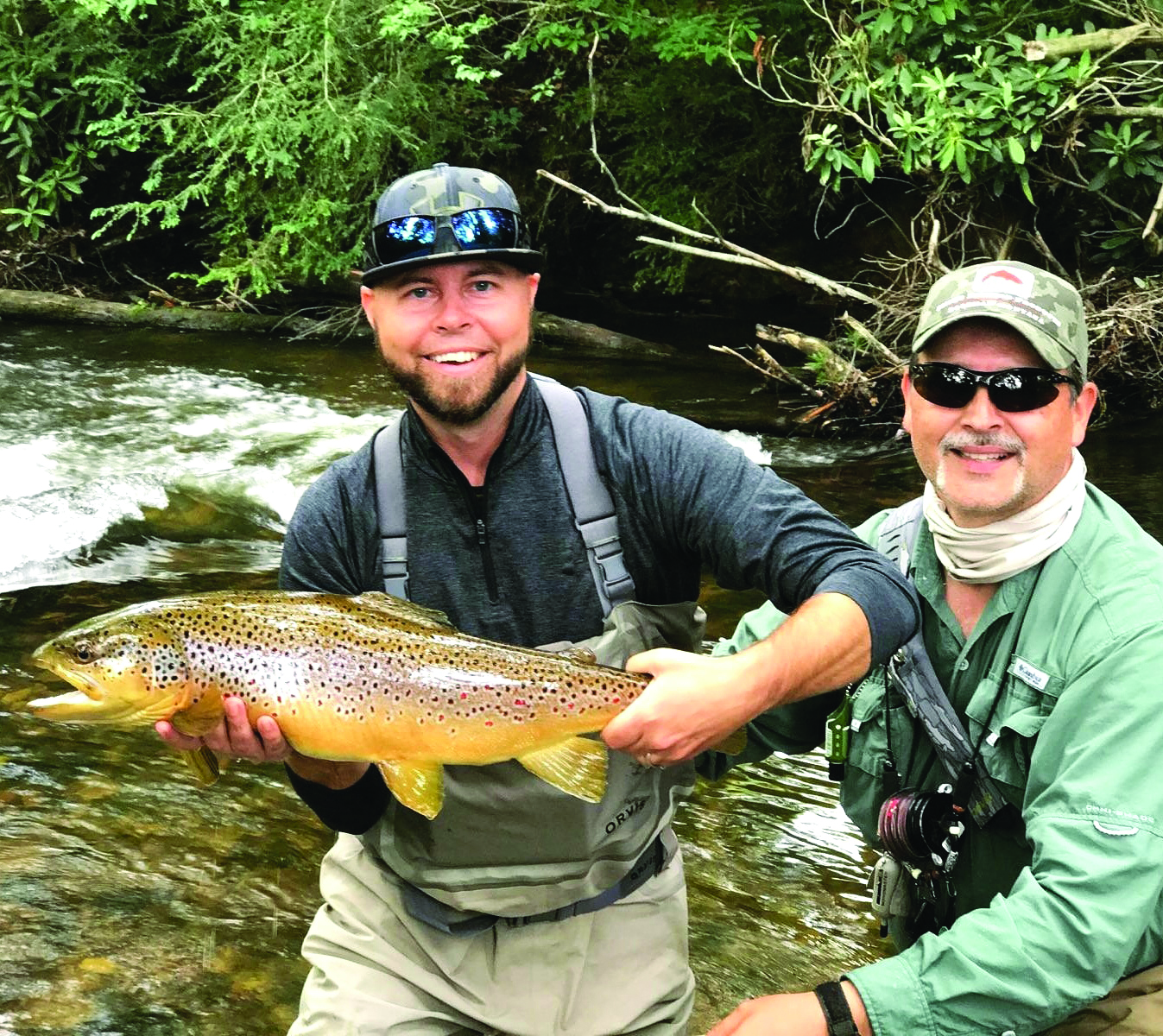Contributed by James Bradley
(706) 273-0764
As we continue into the month of July, hot and steamy days are beginning to show up and there will be more to come. The end result of hot days is higher water temperatures! High water temps above 68 degrees make the life of a trout a little tougher, especially when anglers are present. Most of the private waters in Georgia shut down by the end of June to keep from stressing their big trout and potentially killing them.
Loss of dissolved oxygen (DO) is usually the culprit when water temperatures rise above the 68 degree mark. And the higher the temperature climbs above 68 degrees, the faster the DO dissipates. Trout need a rich level of dissolved oxygen to recoup after an aggressive fight with an angler. Low levels due to high temperatures make it hard for the trout to revive. The sad part of angling during low and warm water is many anglers may see a trout swim off after being released thinking it is okay, but fail to realize that five minutes later that same trout is seen by a different angler floating belly up.
There are ways to prevent this scenario. Private waters close their respective sections of a stream or river due to the above mentioned fact. You can protect trout by simply carrying a stream thermometer and check the temperature before fishing. These thermometers can be purchased online or at most fly shops. If the temperature is anywhere close to 68 or above, you will not have to pack it up and head home. Head up higher into the mountains and fish the smaller headwater streams. These higher streams have more shade and faster water which help maintain lower temperatures throughout the year especially if on a north faced slope. If you are in need of big water, then hit either the Chattahoochee or Toccoa River below their respective dams. Tailwaters stay cold well into late summer. Heck, they stay cold year-round unless water is being released over the spillway.
Tailwater fishing does come with an additional threat. Rapid release of water rises quickly and seems to catch some people off guard. I can assure you that having water coming at you around 150 cubic feet per second (cfs) is much different when it is coming in a bigger volume like 1500 cfs. For some, it is the difference between life and death. Some tailwaters have warning devices, but they can only be heard so far. Some will post their release schedule like the Tennessee Valley Authority (TVA), but this isn’t full proof. Some tailwaters will begin to generate if their grid is calling for additional power. This blows the schedule completely out of the water, no pun intended. Be aware of the regulations as well. Some areas around a tailwater may require you to wear a personal floatation device.
When fishing a tailwater be AWARE of your surroundings. Things to keep an eye on are like a rock that is barely showing in the middle of the river or a log that is partially submerged but still showing. While fishing, if either disappear, it is time to get out! If you begin to notice a change in the water like debris showing up, leaves coming at you in the water, maybe a slight change in water color, it very well may be time to get out and quickly. Many times these are the first signs of rising water and you only have a very short time to make it to the bank before the rise or release shows up. Paying attention to your surroundings is a sure way of making it back to fish again!
Reel ‘Em In Guide Service is the only Orvis Endorsed Fly Fishing Guide in North Georgia’s High County region. They have been offering their services to fly anglers since 2001. They have proper permits for guiding in North Georgia and North Carolina, offering over 7 miles of private trophy waters across Georgia, and operate drift boat trips on the Toccoa River in GA and the Tuckasegee River in NC.
